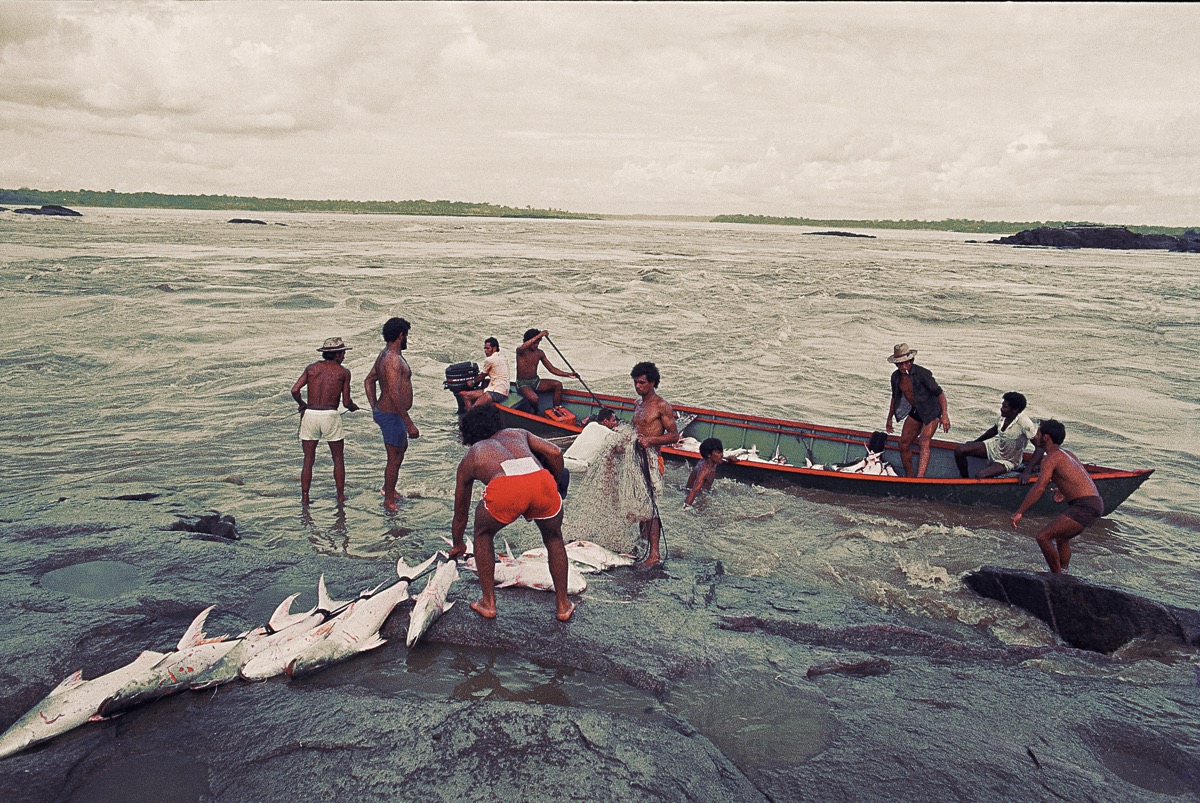Giant Amazonian Catfish Is a Record-Breaking Traveler

The dorado catfish, a native of the Amazon River, can grow to be up to 6 feet (1.8 meters) long. But size isn't this river giant's only superlative: New research finds that these goliath catfish migrate farther than any other freshwater fish in the world.
The dorado catfish (Brachyplatystoma rousseauxii) lives its life out across the entire extent of the Amazon River, which stretches across an area as large as the continental United States, researchers reported Feb. 6 in the journal Scientific Reports. The fish spawn 3,595 miles (5,786 kilometers) from the Amazon estuary where they mature. Over their lifetimes, they may travel as far as 7,208 miles (11,600 km).
"It's the longest freshwater fish migration that's ever been reported in the world," said Michael Goulding, an aquatic scientist at the Wildlife Conservation Society who conducted the study along with lead author Ronaldo Barthem, of Brazil's Museu Paraense Emílio Goeldi, and other researchers. [Quest for Survival: Photos of Incredible Animal Migrations]
Amazing migrations
It wasn't easy to track the movements of this record-breaking fish. The dorado catfish is one of several giant catfish species that live in the muddy Amazon. Some of these aquatic predators can grow to be as long as 9 feet (2.8 m) from their snout to the fork of their tail.
The fish are caught by commercial fishers all along the river, and it was clear that they were traveling large distances, Goulding told Live Science. But no one knew exactly how far, and surveying the enormous river is no easy task.

"It's like canoeing, if you could, from New York to San Francisco," Goulding said. And the headwaters in the Andes are turbulent and dangerous for fieldwork, he added.
So instead of trying to follow the river's goliath catfish in their migratory cycle, the researchers surveyed the distribution of adults, larvae and juvenile catfish of four species: Brachyplatystoma rousseauxii, B. platynemum, B. juruense and B. vaillantii. They gathered year-round data from the river's Madeira basin, an area that drains about 502,000 square miles (1.3 million square km), as well as all the data they could find from multiple years in the entire Amazon basin, an area of about 2.9 million square miles (7.5 million square km).
Sign up for the Live Science daily newsletter now
Get the world’s most fascinating discoveries delivered straight to your inbox.
All of the species except B. vaillantii travel to the piedmont area of the Andes to spawn, the researchers found. Even B. vaillantii is an accomplished traveler; though it appears to spawn in the western Amazon rather than in the Andes, it still makes a journey of 1,944 miles (3,129 km) from the Amazon estuary where the river empties into the Atlantic and where young fish mature to adulthood, the researchers found.
Breaking records
The real record breaker of the bunch, though, was B. rousseauxii, the dorado catfish. This species spawns in the far western Amazon, near the Andes, Goulding said. The larvae then head downstream, maturing into juvenile fish as they go. It takes them about a month to travel about 3,595 miles (5,786 km) downstream to the estuary, where they spend several years eating and growing.
At age 2 or 3, the catfish take off for the return journey, traveling back to the Andes to spawn. Once they do so, they travel downstream to the western Amazon — a journey of about 600 to 1,200 miles (1,000 to 2,000 km). Adults then make the journey from the western Amazon back to the Andes waters each year to spawn again.
The migration is similar to the one that salmon undertake, but much longer, Goulding said. (Salmon travel about 3,700 miles, or 6,000 km, in their lifetime — about half of what the dorado catfish manages.)
"The amazing thing, looking at it in terms of evolution, is that these fish evolved with the entire system" of the river, Goulding said.
The findings have important implications for conservation, because the catfish's broad range means that the entire Amazon system must be protected to ensure that the fisheries in the estuary and along the river's length remain productive, Goulding said. The fish would be particularly threatened by dam building in the Andes, which could block their migration and change the river's ecology.
"About 80 percent of the commercial fisheries in the Amazon are based on migratory species," Goulding said. "The only way to manage those fish realistically in an ecological sense is to consider the scale of their life history, and in this case, it's all the way from the Andes to the estuary."
Original article on Live Science.

Stephanie Pappas is a contributing writer for Live Science, covering topics ranging from geoscience to archaeology to the human brain and behavior. She was previously a senior writer for Live Science but is now a freelancer based in Denver, Colorado, and regularly contributes to Scientific American and The Monitor, the monthly magazine of the American Psychological Association. Stephanie received a bachelor's degree in psychology from the University of South Carolina and a graduate certificate in science communication from the University of California, Santa Cruz.









